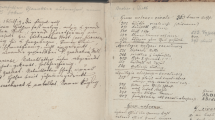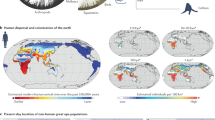Abstract
I THINK Dr. Walker is scarcely clear as to the situation. A personal acquaintance with a writer is not necessary when we judge his published opinions. By “character” biologists mean any trait of a living being—a head, a hair, a characteristic of a hair, a characteristic of that characteristic, and so on. Of course, no character of any sort—neither a head nor a scar, for example—can develop in the individual unless the potentiality to develop it under fit conditions is antecedently present. If, then, we think in terms of germinal potentiality, all characters, for example heads and scars, are equally inheritable. But biologists commonly apply the term “acquired” to actual somatic characters which have developed under the influence of use or injury, the term “inborn” to characters which developed in the absence of these influences, and the term “inheritable” to characters which were present in the parent and tend to be “inborn” in the offspring. Thus they speak of heads as inborn and inheritable, and of use-callosities and scars as acquired and non-inheritable. I am dot concerned here with the correctness of these terms. My statement of the manner in which they are used is correct.
This is a preview of subscription content, access via your institution
Access options
Subscribe to this journal
Receive 51 print issues and online access
$199.00 per year
only $3.90 per issue
Buy this article
- Purchase on Springer Link
- Instant access to full article PDF
Prices may be subject to local taxes which are calculated during checkout
Similar content being viewed by others
Author information
Authors and Affiliations
Rights and permissions
About this article
Cite this article
REID, G. The Inheritance of Mental Characters. Nature 88, 210–211 (1911). https://doi.org/10.1038/088210c0
Issue Date:
DOI: https://doi.org/10.1038/088210c0
Comments
By submitting a comment you agree to abide by our Terms and Community Guidelines. If you find something abusive or that does not comply with our terms or guidelines please flag it as inappropriate.



